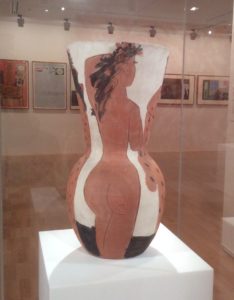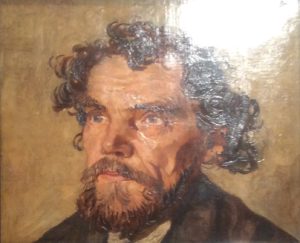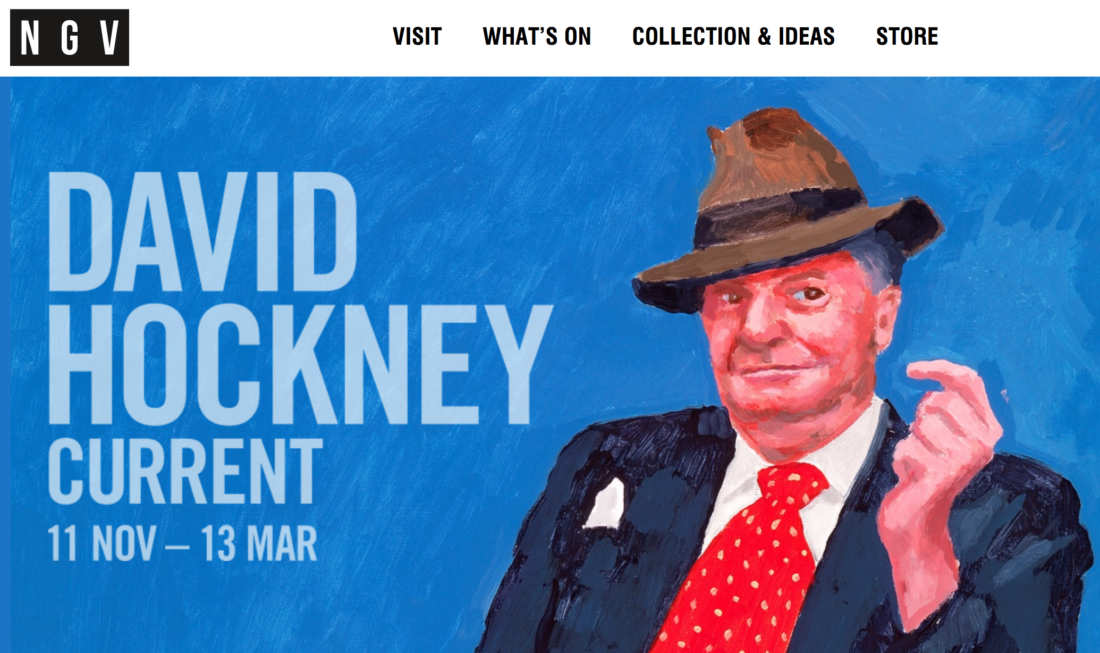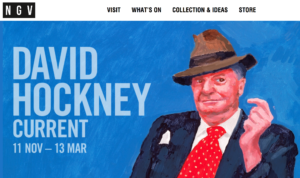Postcard from Oxford: Ashmolean Museum
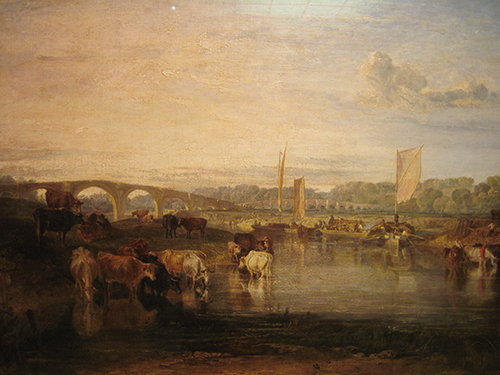
Joseph Mallord William Turner (1175-1851): Walton Bridges
This was my fourth visit to the wonderful Ashmolean Museum.
Anne wanted to attend a literary lunch at Denman College – meeting Clare Mackintosh, author of I See You, a brilliant psychological thriller – so we decided to share the driving from Devon, and I got to spend the day enjoying once more this amazing trove of art.
With so many works of art on display, it’s difficult to pick out just a few favourites, but here are my five from this particular excursion.
At the Ashmolean: Turner’s Walton Bridges
These bridges were mentioned in a previous postcard, way back in February when Anne and I were in Australia. We were enjoying a stroll around NGV (National Gallery of Victoria). As I mentioned back then: it was a lovely surprise to see ‘Walton Bridges’.
The Walton Bridges were erected in the 1780s and were painted by Turner (twice) in 1805 for exhibitions in 1806-7.
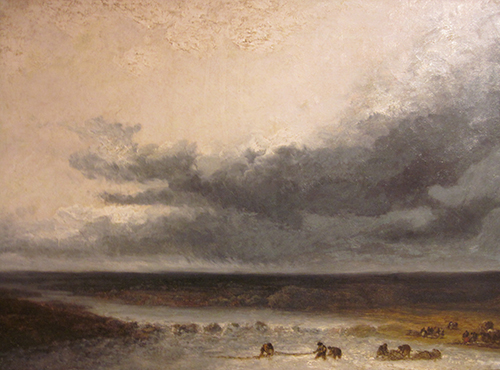
Jean-Baptiste-Camille Corot (1796-1875): Montfermeuil, the Brook in the Wood, 1867
Turner used his artistic licence to create this idyllic pastoral landscape, minus the various houses that would have been visible to anyone present at that time.
This painting – like the one is Melbourne – brought back into sharp focus the many times in my life when, forty plus years ago, I drove from my home in Shepperton and crossed a more modern version of these bridges en route to Walton Station for my daily commute to London.
How time flies?
At the Ashmolean: Corot’s Montfermeuil, the Brook in the Wood
This oil-on-canvas painting is an example of Corot’s later work.
His palette is more monochromatic and the overall effect more blurred.
I see similar skies over Salcombe. The challenge is to capture the atmosphere before the clouds move on.
At the Ashmolean: Etty’s The Repentant Prodigal’s Return to his Father
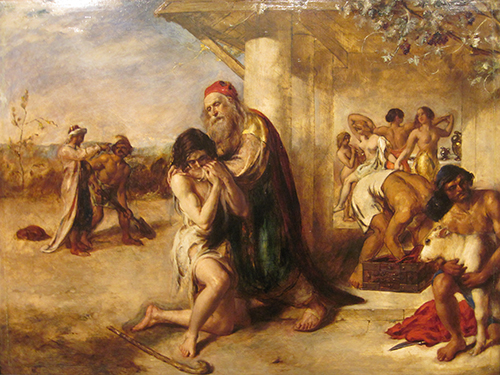
Willian Etty (1787-1849): The Repentant Prodigal’s Return to his Father
This painting combines two scenes from the story of the Prodigal son: centre stage, the embrace between father and son; and, to the left, the return of the elder brother from working in the fields.
Etty was unique in his ability to make a successful career out of combining history painting – such as this one – with his love for Venetian colours.
He was especially keen on life drawings and studied life at the Royal Academy schools – and this painting includes four lovely ladies, in various classic poses, in the background!
I’m very much looking forward to getting back into class. The Salcombe Art Club Main exhibition ended on Saturday, and I’ll be back ‘in harness’ on Tuesdays (with Michael Hill) and Fridays (with Ian Carr).
On the occasional Monday, there’s a life drawing class too …
At the Ashmolean: two paintings by Walter Richard Sickert’s
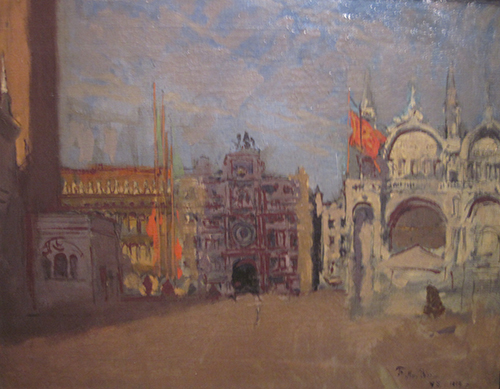
Walter Richard Sickert (1860-1942): The Piazzetta do San Marco, Venice, 1900
Although Walter Richard Sickert was born in 1860, in Germany, the son on Oswald Sickert, a Danish-German artist, the family relocated to Britain in 1868 where they obtained British nationality.
Sickert visited Venice in the Spring of 1900.
This first painting, The Piazzetta do San Marco, Venice, with the Campanile on the left and the basilica of San Marco on the right, was dedicated to a Mrs May (Polly) Price. Polly was the daughter of one of Sickert’s closest friends, a Mrs Middleton.
I fully intend to visit Venice again soon. Wherever you look. there is a composition with perfect light, just waiting to be painted.
Sickert, as a painter and printmaker, was a member of the Camden Town Group in London – a small group of English Post-Impressionist artists active 1911-13 and influenced by Vincent van Gogh and Paul Gauguin.
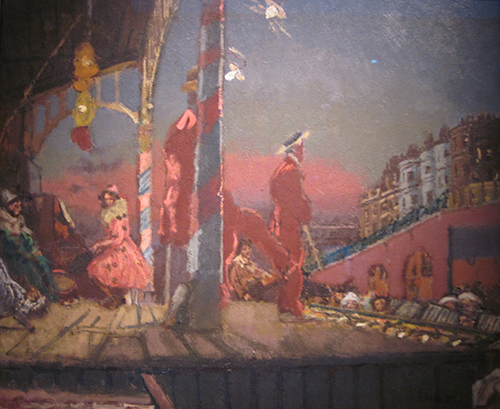
Walter Richard Sickert (1860-1942): The Brighton Pierrots, 1915
This second painting, an oil-on-canvas, depicts members of the troupe of Pierrots who performed on stage in Brighton in 1915.
Sickert visited his patron and friend Walter Taylor and studied these Pierrots, making many sketches before returning to London and creating this image.
His Pierrots perform in front of rows of empty deck chairs, and presents a depressing insight into life in Brighton at that time.
However, the painting was sold very quickly and then Sickert was commissioned to paint a second version. You can see that one at the Tate.
Apparently, Sickert rarely commissions. Neither do I!
Lunch at the Ashmolean
I thoroughly enjoyed my day at the Ashmolean, not least because the rooftop restaurant is first class, albeit with a first class price tag!
I’m very much looking forward to seeing Anne browse through the new Denman catalogue. I’m sure she’ll find something she will enjoy, and that I can disappearing into Oxford again soon.
This post is one of my POSTCARD series, sharing all things ART with you when I go travelling.


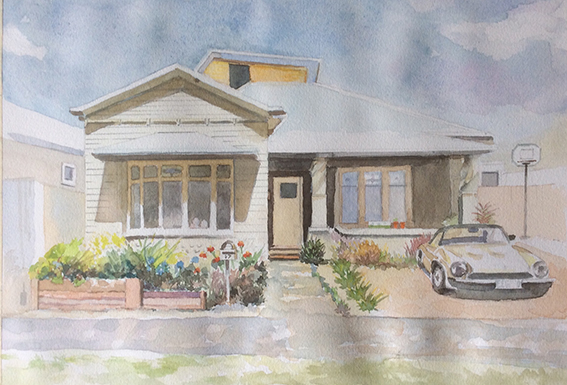
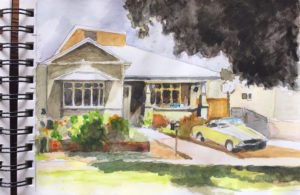
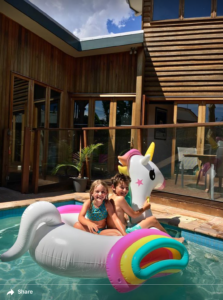
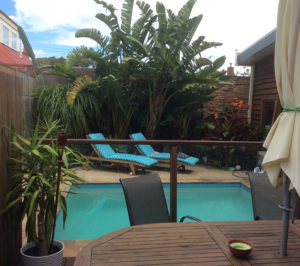
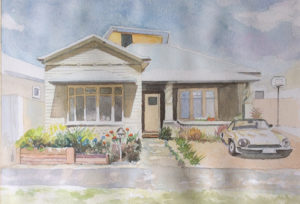
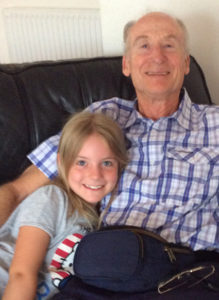 Notice the two figures in the window?
Notice the two figures in the window?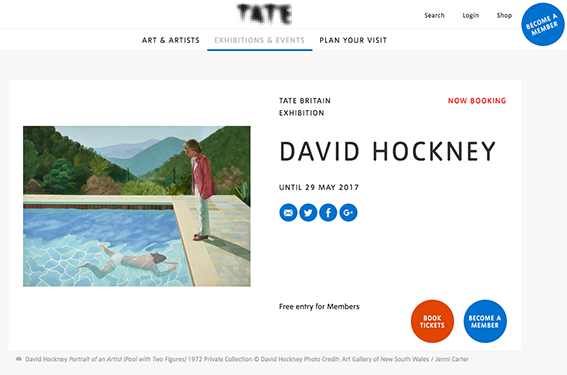
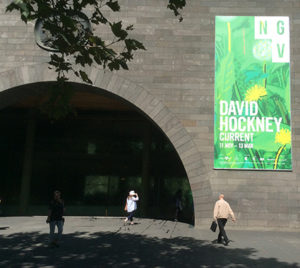 Anne and I wanted to return to the NGV (National Gallery of Victoria) as I’d seen so many great exhibits while she enjoyed lunch with a writer friend.
Anne and I wanted to return to the NGV (National Gallery of Victoria) as I’d seen so many great exhibits while she enjoyed lunch with a writer friend.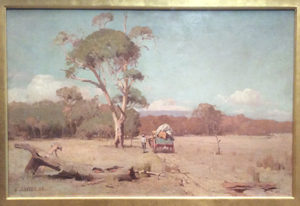 First, since Anne and I chose a particularly hot day to return to NGV – and to make the most of the air-conditioned environment – this painting by David Davies made us laugh.
First, since Anne and I chose a particularly hot day to return to NGV – and to make the most of the air-conditioned environment – this painting by David Davies made us laugh.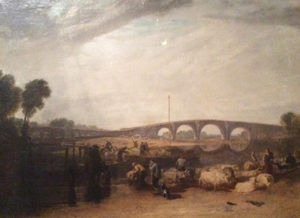 Second, is a gem by JMW Turner.
Second, is a gem by JMW Turner.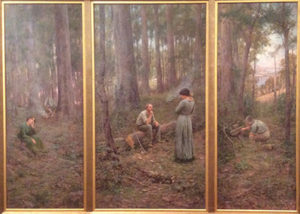 In ‘A lord of the bush’, Hans Heyson shows no sentiment. According to the description given by NGV, Heyson was profoundly inspired by the romantic landscape paintings of Constable (and others).
In ‘A lord of the bush’, Hans Heyson shows no sentiment. According to the description given by NGV, Heyson was profoundly inspired by the romantic landscape paintings of Constable (and others).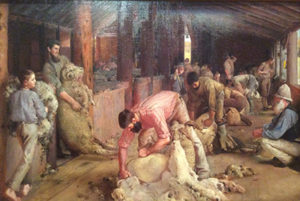 Then there was ‘The Shearing of the Lambs’ by Tom Roberts: the finest example of life in the outback in the nineteenth century.
Then there was ‘The Shearing of the Lambs’ by Tom Roberts: the finest example of life in the outback in the nineteenth century.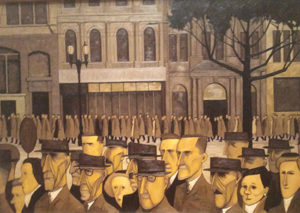 Collins St also features in this next image.
Collins St also features in this next image.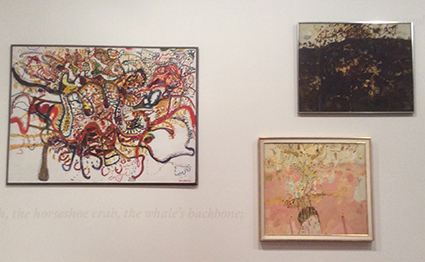
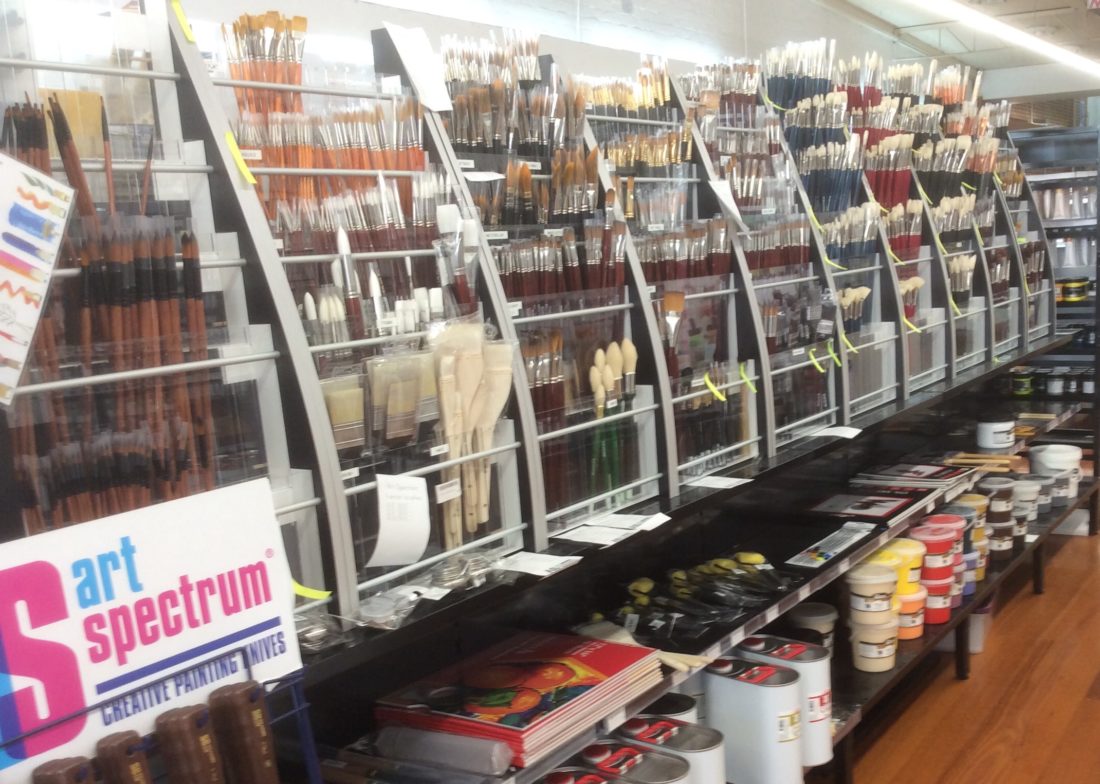
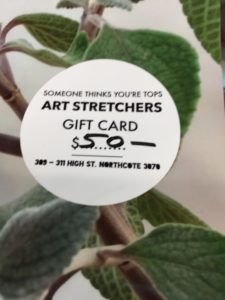 Christmas in Melbourne seems an age ago, and we have seen in the New Year in style – and today I found an opportunity to spend my Christmas voucher, a generous gift from our hosts, on … brushes!
Christmas in Melbourne seems an age ago, and we have seen in the New Year in style – and today I found an opportunity to spend my Christmas voucher, a generous gift from our hosts, on … brushes!
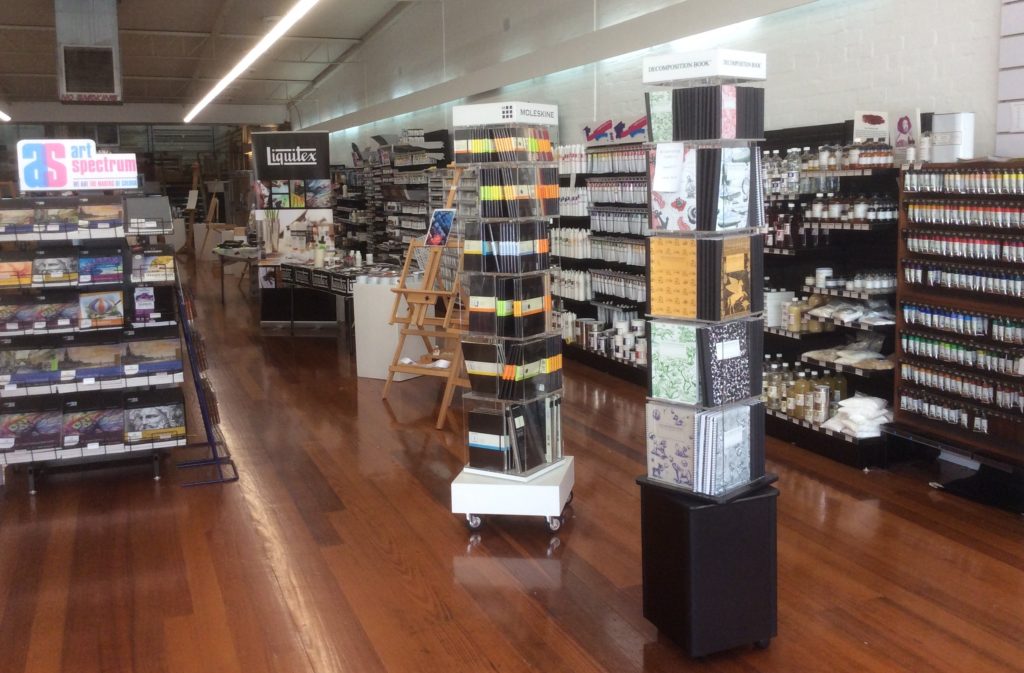
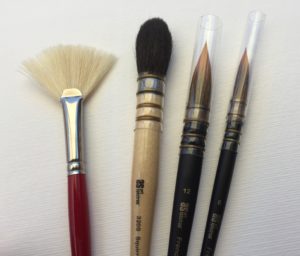 Four brushes!
Four brushes!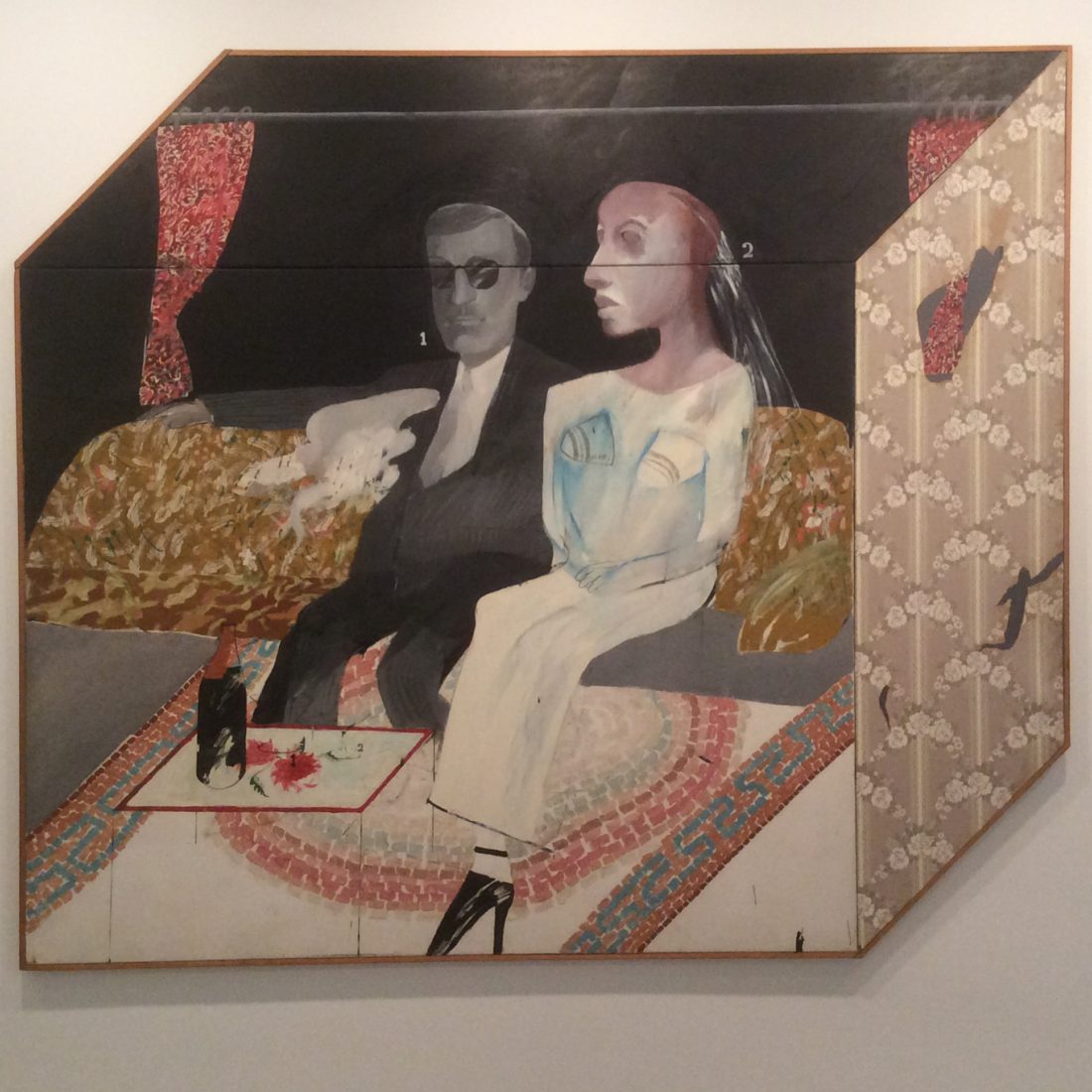
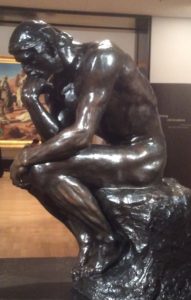
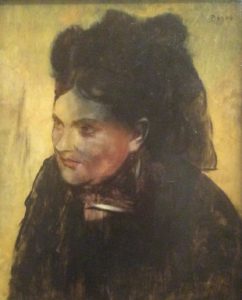 (Left) Rodin’s The Thinker: it was well worth spending time, admiring his undoubtable handiwork.
(Left) Rodin’s The Thinker: it was well worth spending time, admiring his undoubtable handiwork.